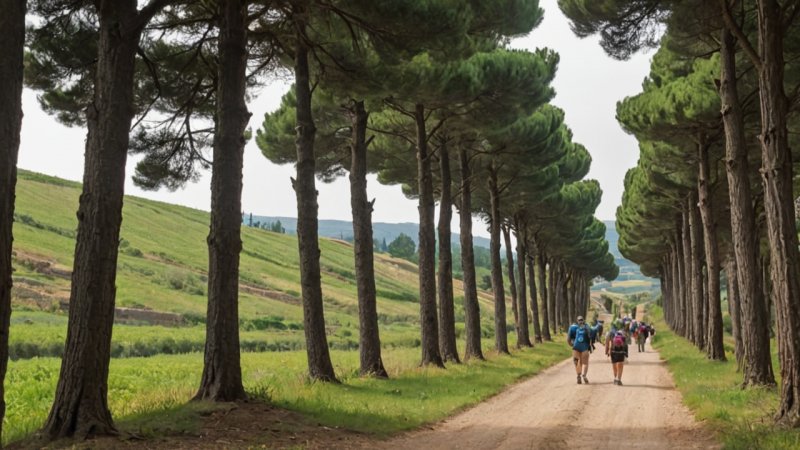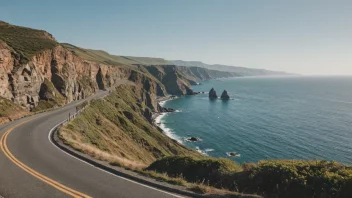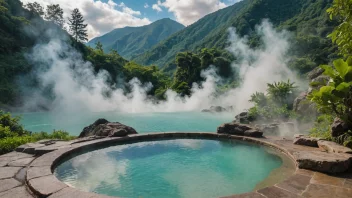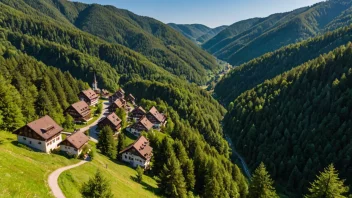The Mediterranean region is a treasure trove of history, culture, and stunning landscapes. Among its many offerings, two historical trails stand out for their unique experiences and rich narratives: the Camino de Santiago and the Via Appia. Both paths promise a journey through time, but they differ significantly in their routes, experiences, and the historical contexts they reveal. In this article, we will delve into a detailed comparison of these two remarkable trails, highlighting their pros and cons, and providing insights into what each path has to offer.
Overview of the Trails
The Camino de Santiago, also known as the Way of St. James, is a network of pilgrimage routes that culminate at the shrine of Saint James in Santiago de Compostela, Spain. This centuries-old pilgrimage attracts thousands of walkers each year, eager to experience its spiritual significance and natural beauty.
On the other hand, the Via Appia, one of the earliest and most important Roman roads, stretches from Rome to Brindisi in Italy. Known as the "Queen of Roads," it was originally built for military purposes and later became a vital trade route. Today, it offers a glimpse into ancient Roman civilization and its engineering prowess.
Historical Significance
The historical significance of both trails is immense, but they reflect different eras and cultural contexts.
- Camino de Santiago: The Camino has been a pilgrimage route since the 9th century, dedicated to Saint James, one of Jesus' apostles. It is steeped in Christian tradition, attracting pilgrims from around the world seeking spiritual growth and reflection.
- Via Appia: Constructed in 312 BC, the Via Appia served as a strategic military route. It played a crucial role in the expansion of the Roman Empire and is lined with ancient ruins, tombs, and monuments, offering a fascinating glimpse into the past.
Scenic Beauty
Both trails boast stunning landscapes, but the nature of their beauty varies greatly.
- Camino de Santiago: The Camino winds through a diverse range of landscapes, including rolling hills, lush vineyards, and charming villages. Pilgrims often find themselves surrounded by breathtaking views, particularly in regions like Galicia, where misty mountains meet the Atlantic coast.
- Via Appia: While the Via Appia primarily showcases ancient Roman architecture, it also offers beautiful countryside vistas. The path is lined with cypress trees and dotted with ruins, creating a picturesque setting that transports travelers back in time.
Travel Experience
The experience of traveling each trail is distinct, catering to different types of adventurers.
- Camino de Santiago: The Camino is known for its welcoming atmosphere, with numerous albergues (hostels) and restaurants catering to pilgrims. The sense of community is palpable, as walkers share their stories and experiences along the way. The journey is often as important as the destination.
- Via Appia: The Via Appia appeals to history enthusiasts and those seeking a more solitary experience. While there are fewer accommodations along the route, the opportunity to explore ancient ruins and archaeological sites makes it a rewarding journey for those interested in Roman history.
Difficulty Level
When it comes to difficulty, both trails offer varying challenges.
- Camino de Santiago: The Camino is generally considered accessible for walkers of all ages and fitness levels. There are multiple routes with varying distances and terrains, allowing travelers to choose a path that suits their abilities.
- Via Appia: The Via Appia can be more challenging, particularly in sections where the ancient cobblestones are uneven. Travelers should be prepared for longer distances and less infrastructure, making good walking shoes and physical preparation essential.
Best Time to Visit
Timing your journey can greatly affect your experience on either trail.
- Camino de Santiago: The best time to walk the Camino is during the spring (April to June) and fall (September to October) when the weather is mild, and the trails are less crowded. Summer can be hot and busy, especially in popular sections.
- Via Appia: The ideal time to explore the Via Appia is during the cooler months of spring and fall. Summers in Italy can be sweltering, making long walks uncomfortable.
Conclusion
In summary, both the Camino de Santiago and the Via Appia offer unique historical journeys through the Mediterranean. The Camino provides a spiritual and communal experience, ideal for those seeking connection with fellow travelers and nature. In contrast, the Via Appia caters to history lovers and those interested in ancient Roman culture, offering a more solitary yet profound adventure. Ultimately, the choice between these two trails depends on your interests and what you hope to gain from your journey in this beautiful region.






